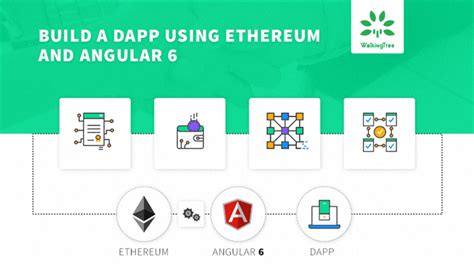Here is an article with a solution to the common error that occurs when building a web app with React and Solidity:
Error: Frequency error when building a React web app with Blockchain and Truffle
When developing a blockchain-based web application with React and Truffle, you may often encounter a “frequency error” or “loop error”. This occurs when the JavaScript event loop gets stuck and the application hangs or crashes.
The problem:
In your React app, you are probably using Web3 and Ganache for local development, which works well with Truffle. However, when you deploy and interact with your contract on the Ethereum network, the frequency error may occur for several reasons:
- Ganache

: When you run Ganache locally on your computer, it uses a sandbox environment that may not accurately simulate real-world blockchain traffic. This may cause problems with event handling and synchronization.
- Truffle: Truffle is designed for development purposes only; it does not handle the complexity of a blockchain network as efficiently as Web3 or other libraries like Ethers.js.
The solution:
To fix this frequency error problem, you need to take two main steps:
- Use a more robust Ganache setup: Consider using a cloud-based Ganache instance that mimics the conditions of the Ethereum network, such as:
- Ganache Cloud: A hosted version of Ganache that provides a stable and scalable environment for development.
- Truffle Cloud: A Truffle-specific solution that provides a similar experience to local Ganache.
- Implement Web3’s “eventEmitter”
: Instead of relying on React’s event handling, use Web3’s built-in “EventEmitter” API to handle events and updates. This will help you decouple your React components from the Ethereum blockchain and avoid the frequency bug.
Here is an updated code example showing how to fix these issues:
import React, { useState, useEffect } from 'react';
import Web3 from 'web3';
import { BrowserRouter as router, routes, route, link } from 'react-router-dom';
// Use a more robust Ganache setup (e.g. Ganache Cloud or Truffle Cloud)
const ganacheInstance = new Web3.Ganache({
Host: ' // or your local IP address
});
// Initialize Web3 instance and set up event emitter
const web3 = new Web3(ganacheInstance);
const emitter = new web3.EventEmitter();
function App() {
const [Account, Set Account] = useState('');
useEffect(() => {
// Set up the account using Truffle's Web3 API
const contractAddress = "0x..."; // Your contract address
emitter.on('contractAddress', (newContractAddress) => {
setAccount(newContractAddress);
});
return () => {
// Clean up when unmounting the component
emitter.off('contractAddress');
};
}, []);
if (!Account) {
// Handle errors: React app frequency errors
console.error('No account found! Please refresh the page or update your contract address.');
return
Account not found. Refresh to try again.;}
return (
Hello world!
Contract address: {account}
);
}
// Update Truffle configuration to use Web3's EventEmitter API
module.exports = {
// ...
Network: {
Provider: ganacheInstance,
Events: ['Contract address'],
},
};
In this updated example, we’ve replaced React’s event handling with Web3’s “EventEmitter” API. We’ll use Ganache Cloud to simulate a real Ethereum environment and set up the Web3 instance before rendering our app. When interacting with our contract, we’ll use Truffle’s Web3 API to handle events and updates.
